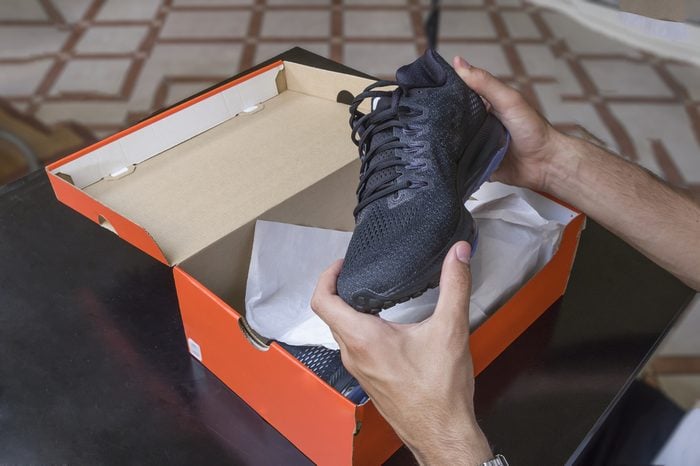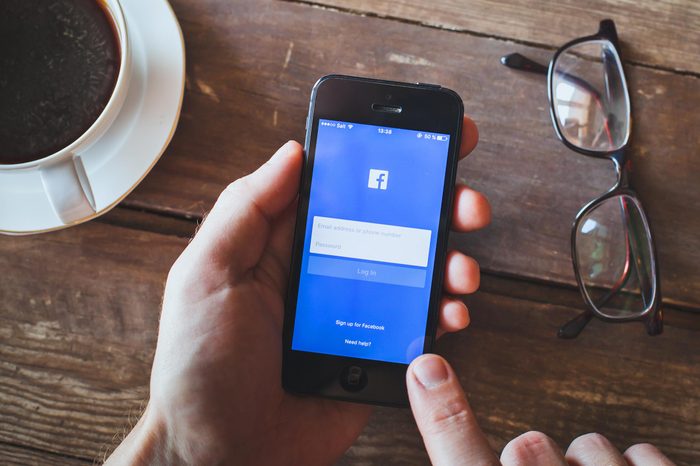
Tracking your Facebook feed
“The number one way that advertisers get the attention of prospective clients on Facebook is by using Facebook Pixel. With Pixel installed, advertisers are tracking what pages you recently visited, and what pages you have not yet visited, so they know if you have looked at an item but have not purchased it. I often see people confused, shocked, or in awe of Facebook’s ability to place items in their newsfeed immediately after they interact with the brand—and it’s this precise and advanced targeting capability that more and more advertisers are implementing because they are so effective.” —Meg Brunson, founder and CEO of EIEIO Marketing. Here’s what to know before shopping on Facebook.

Creating a sense of scarcity
“By creating a perceived limited quantity, consumers are enticed to buy for fear of missing an opportunity and actually perceive the item to be of higher quality. Scarcity also applies to timed deals. For example, ’10 minutes remaining to claim your discount’ is much more effective than simply offering the discount alone. In reality, there is often not a limited quantity or time limit, but advertisers make these claims because they know the effect they will have.” —Tammy Duggan-Herd, PhD, Marketing Manager at Campaign Creators.
Hoping you’ll miss the fine print
“As an attorney, I often see other lawyers using advertising tricks. We’re here to be of service to our clients, but it doesn’t look that way from the proliferation of ads, especially those on TV about settlements. For example, some firms will hire ‘spokespeople’ to pretend to be attorneys and actors in the place of actual clients to talk about results. They get away with it by having a small almost invisible disclaimer at the bottom of the screen.” —Kevin Patrick, owner and founder of Kevin Patrick Law, LLC.

Annoying you
“The advertiser tries to annoy the consumer and get them to view their product: Think of the magazine inserts that fall out, forcing you to pick them up or the pop-up ads that you need to delete. This tactic forces consumers to see their product offering or product inducement. Many times consumers do not know that advertisers are doing this. The goal is to get their product offering in front of the consumer. Ninety percent of the time the consumers will read it.” —D. Anthony Miles, PhD, CMA, CEO and founder of Miles Development Industries Corporation.
Anchoring a price in your mind
“An advertiser tells the buying public that something is worth a lot and people will naturally anchor that number to the value of the item. Then they show a lower price they’re offering it at. Many advertisers will do that, and then make sure you feel some FOMO—fear of missing out—by saying the offer is only good for X time, or Y number of customers. If you want to see this in action, monitor the price of a single product in the grocery store and see how much it actually changes when it goes on ‘sale.’ Usually, they’ll mark the price up and then discount it back down. Sometimes, they only mark it down to the original price, and sometimes they discount it more but mark it up first to make the savings seem like a greater value.” —Yoko Chris, CEO of Yoko Co. Here are savvy shopping tricks you’ll wish you knew all along.
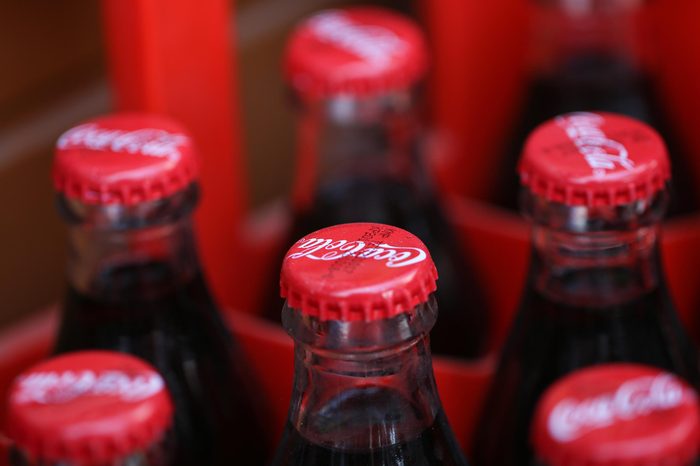
Doing you a “favor”
“We have been raised in our society from a young age to reciprocate favors. After being provided value, we feel like we need to even the score. Marketers will use this to their advantage by giving something of value away for “free” and in turn, the consumer feels the need to return the favor by making a purchase. In the so-called Regan study, conducted in 1971, researchers found that giving a free Coke to volunteers prior to selling them raffle tickets made the volunteers twice as likely to purchase a ticket than if had they not received a free Coke.” —Tammy Duggan-Herd, PhD, Marketing Manager at Campaign Creators.
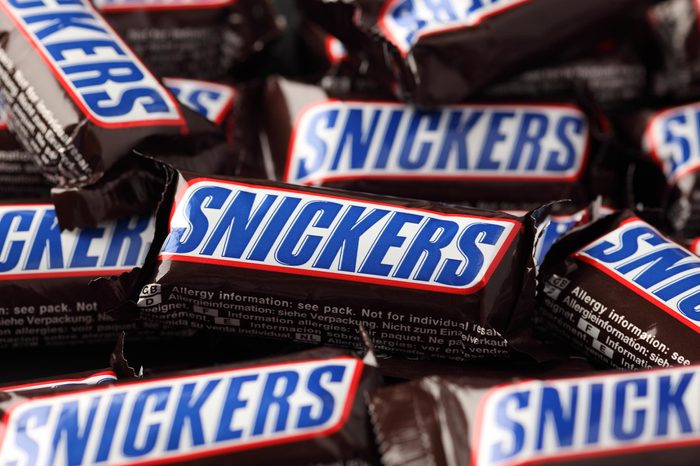
Making you laugh
“Being quirky and using funny ideas is a way that advertisers grab your attention. A direct example is when I was at Target checking out. I took a look at the candy section, which is clearly where customers participate in impulse buys. I noticed my favorite candy bar, Snickers. Instead of displaying the brand name, the wrapper read ‘Ornery.’ The candy company considered how a person feels before they buy a chocolate bar. Perhaps your blood sugar is low and you need to laugh, so you relate to it. As a result, you buy the candy bar. I am a lover of words so I bought myself a Snickers bar.” —Sarah Fader, CEO of Eliezer Tristan Publishing.
Calling in the authorities
“People are also very easily swayed by authority. Sometimes called the White Lab Coat Effect, it’s an actor in a lab coat presenting an authoritative perspective, and it makes consumers more willing to buy the product with minimal research or skepticism. One of the most common examples is an advertisement containing ‘9/10 doctors recommend,’ typically with an image of someone in a white lab coat. People see this and will assume the claims are legitimate.”—Tammy Duggan-Herd, PhD, Marketing Manager at Campaign Creators.
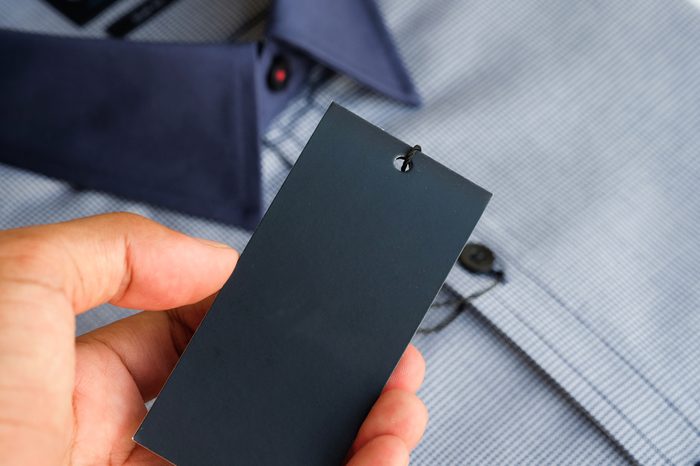
Using pricing psychology
“Retailers typically end pricing in 9s to create perceived value, but only if the left-hand number changes ($2.99 vs. $3.00, not $3.99 and $3.59). Conversely, prestige pricing takes the opposite approach, where a $499 purse has greater perceived value than it would at $500. Menu pricing strategies typically add a more expensive third tier to the meal options, to sell more of a high-priced item that is now mid-priced. It’s all about perceived value.”—Kent Lewis, President & Founder of Anvil.
Creating fake problems
“In this tactic, the advertiser tries to present a ‘problem’ to the consumer they did not know about, then scare them into addressing the problem with their product. The goal is to impart fear into the consumer and get them to make a purchase. This is used with several health products and goods, like teeth whitening products: ‘Your teeth are brown or yellow and look bad!” —D. Anthony Miles, PhD, CMA, CEO and founder of Miles Development Industries Corporation.
Using flashy colors
“Having the call to action button in a bright color that contrasts with the background of the website is a great way to call attention to the button and encourage customer action.” —Stacy Caprio, Accelerated Growth Marketing. Check out these psychology experiments that went horribly wrong.
Tapping your emotions
“Brands will use certain phrases in their ad copy to convey an emotion in order to get customers to take action. Here are some of the phrases and the feeling they provoke:
- Don’t get left behind (fear of missing out)
- There are no hidden costs (trust)
- Do your taxes in half the time (time-saver)
- Your contribution can provide clean water for these children (guilt)
- There’s nothing else better than this (value)
- Be like your favorite celeb (set a trend)
- Be the first to take advantage of this special offer” (be a leader)
—Connie Chi, founder and CEO of the Chi Group.

Luring you with free stuff
“As a family-focused company, Raddish promotes ways for customers to get to know us before committing to a subscription to our kids cooking club. We actually find that ‘soft sells’ work, such as promoting our email newsletter for free recipes and content, joining our Facebook group to see how other families learn to cook with Raddish, and live streaming cooking lessons. These are low cost and low commitment ways for potential customers to try us out without the obligation of buying. Our data shows that people on average take a week or two considering Raddish before purchasing, so we give them time to see what we’re all about.” —Seth Barnes, co-founder and CMO of Raddish.
Customizing imagery
“Gone are the days of sending generic advertisements. If the company is of a certain caliber, they are spending the money needed to gather data on their consumers to make their products more appealing. For example, imagine you are a mother that has a son who needs basketball shoes. Instead of emailing a general Nike shoe advertisement, we email a photo featuring a mom dropping off her son at basketball practice with his shoes in her hands. This simple photo swap allows you, the consumer, the opportunity to better visualize yourself with a particular product or service.”—Dalton Francis, Director of Email Marketing for Giant Partners.
Becoming your buddy
“Advertisers often use language that speaks to consumers as if they are friends. More than a decade ago, the language used in digital ads was more direct and told consumers to take some kind of action. Examples would be, ‘buy this now,’ or ‘click here.’ With the rise of social media and social influencers that consumers think of as ‘friends,’ language in ads has evolved to be more colloquial. Consumers trust friends more than they trust brands. Using language like, ‘We [or I] have just the item for you!’ allows brands to speak as a friend. The use of this kind of language is an effective advertising psychology method. Even the use of emojis has become not only something used between friends to convey familiarity but now brands have started using these popular icons as a way to gain trust.” —Josh Ogle, CEO of Tibrio. Next, read about these secrets messages hidden in company logos.






